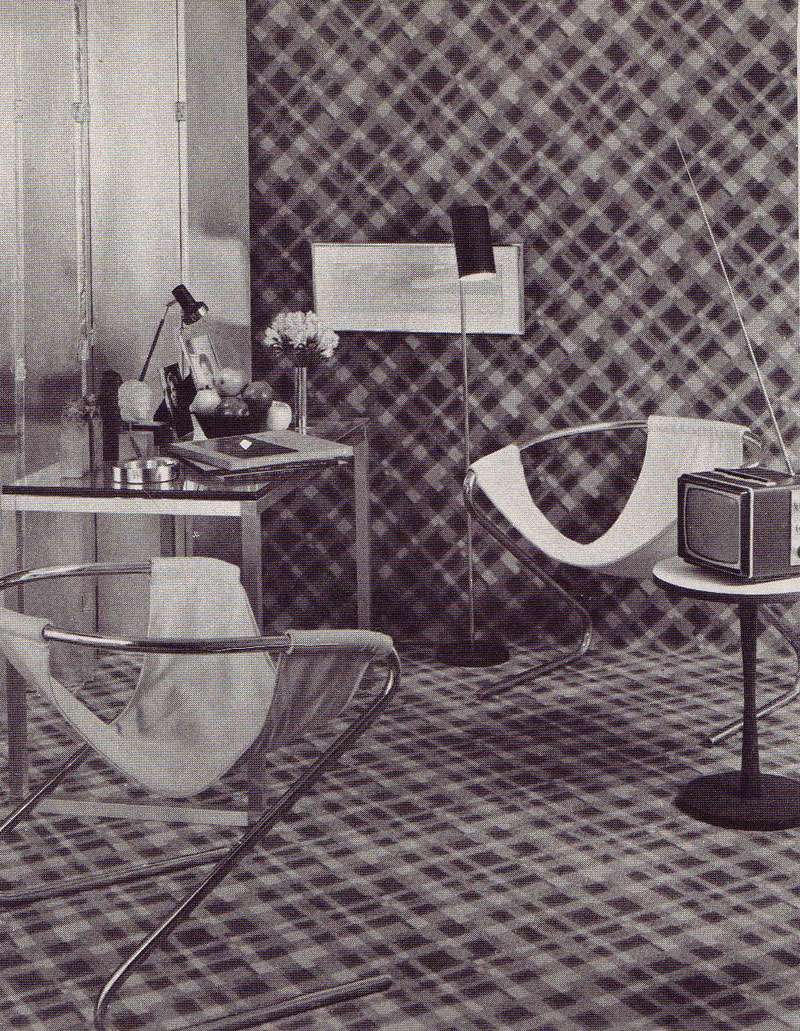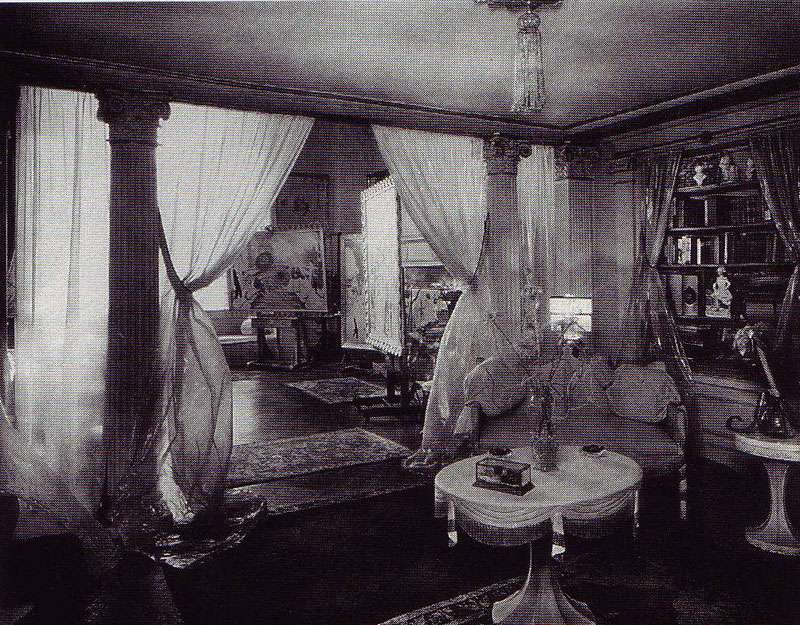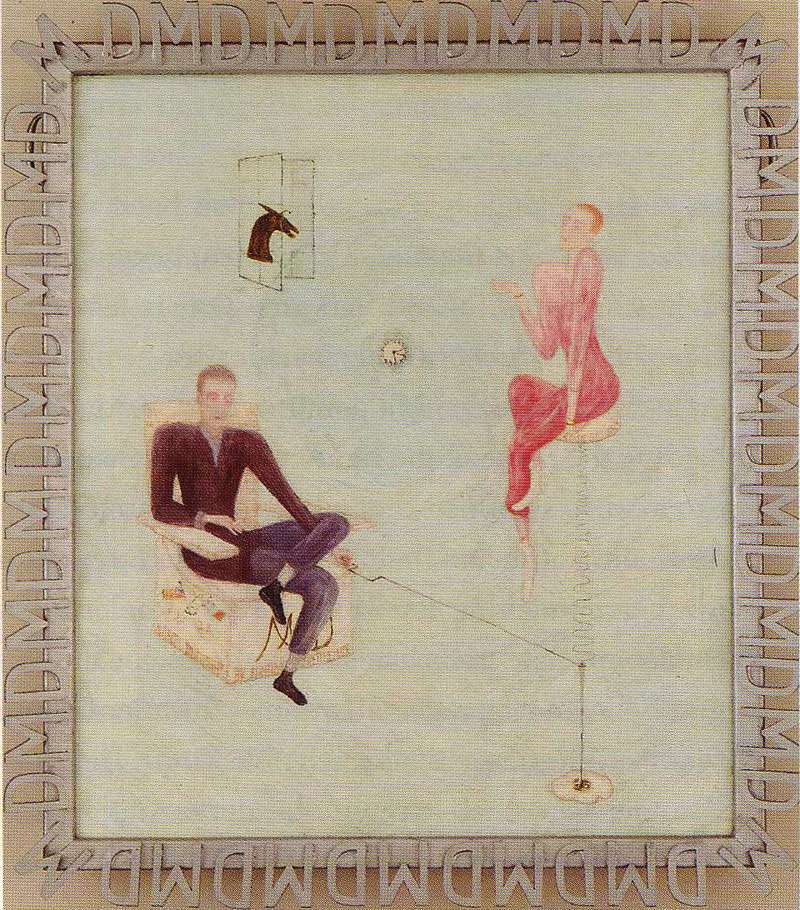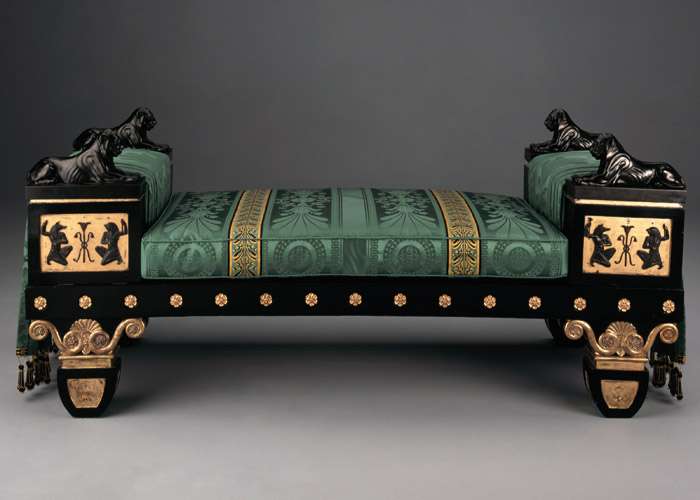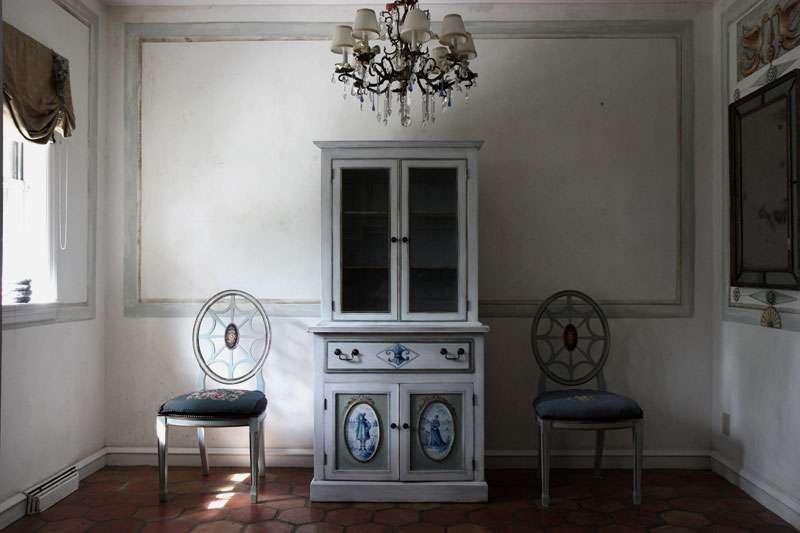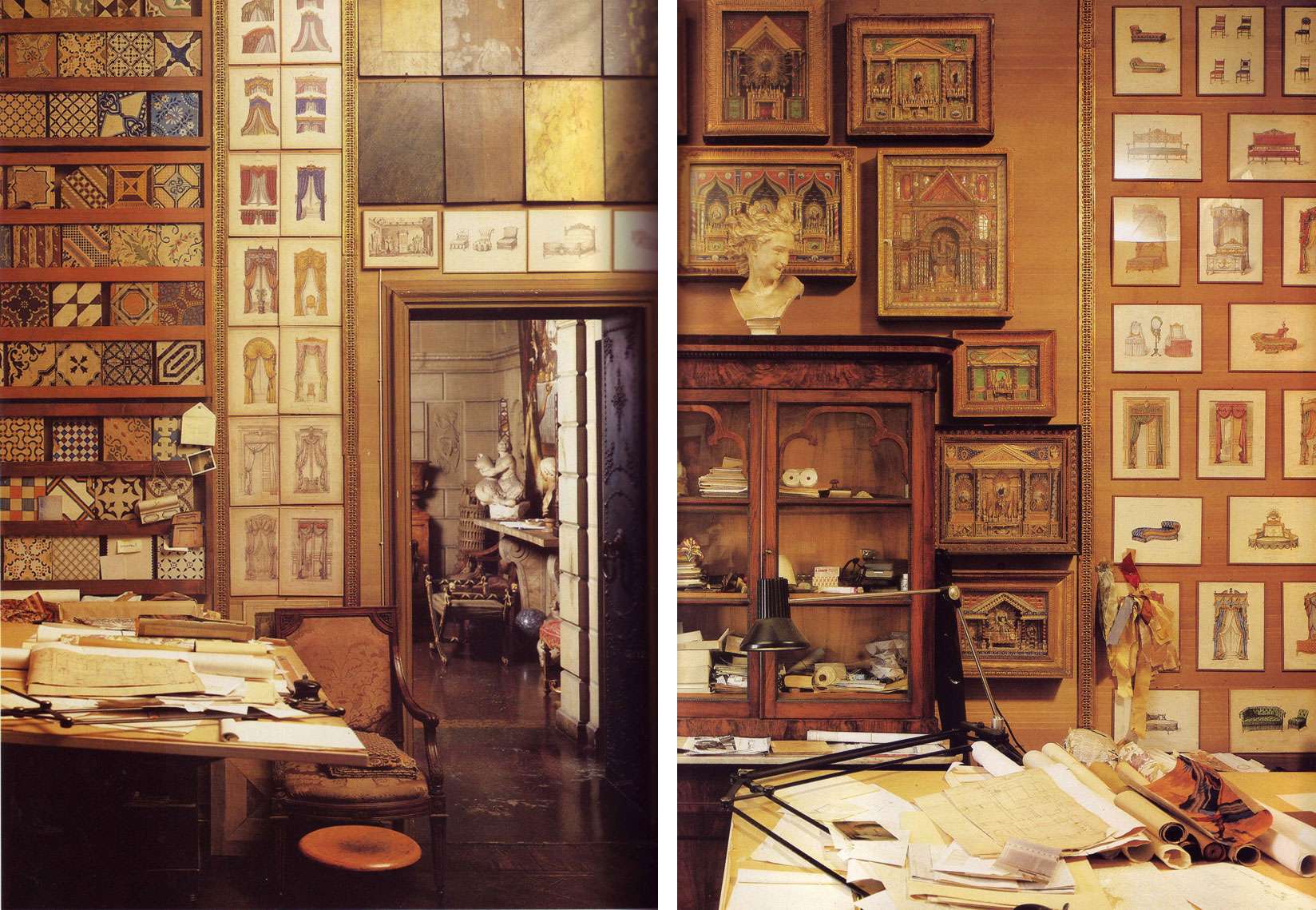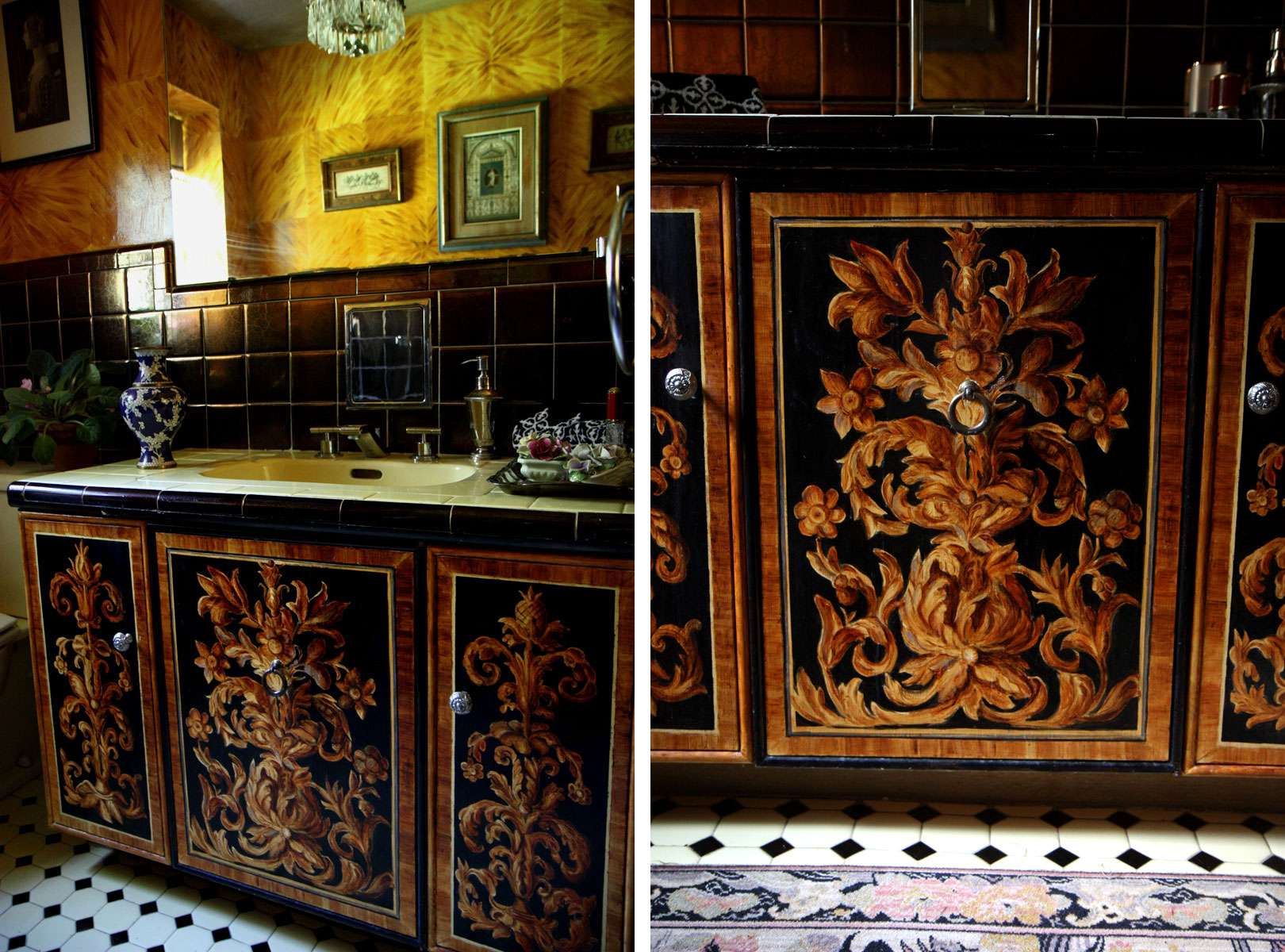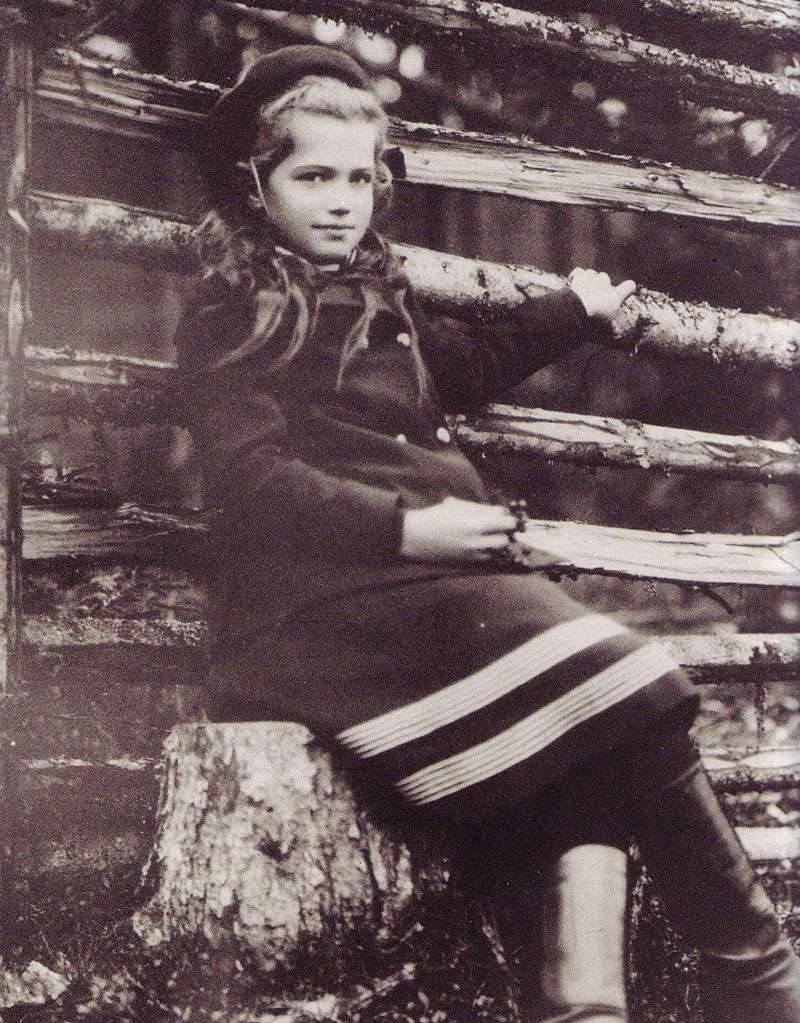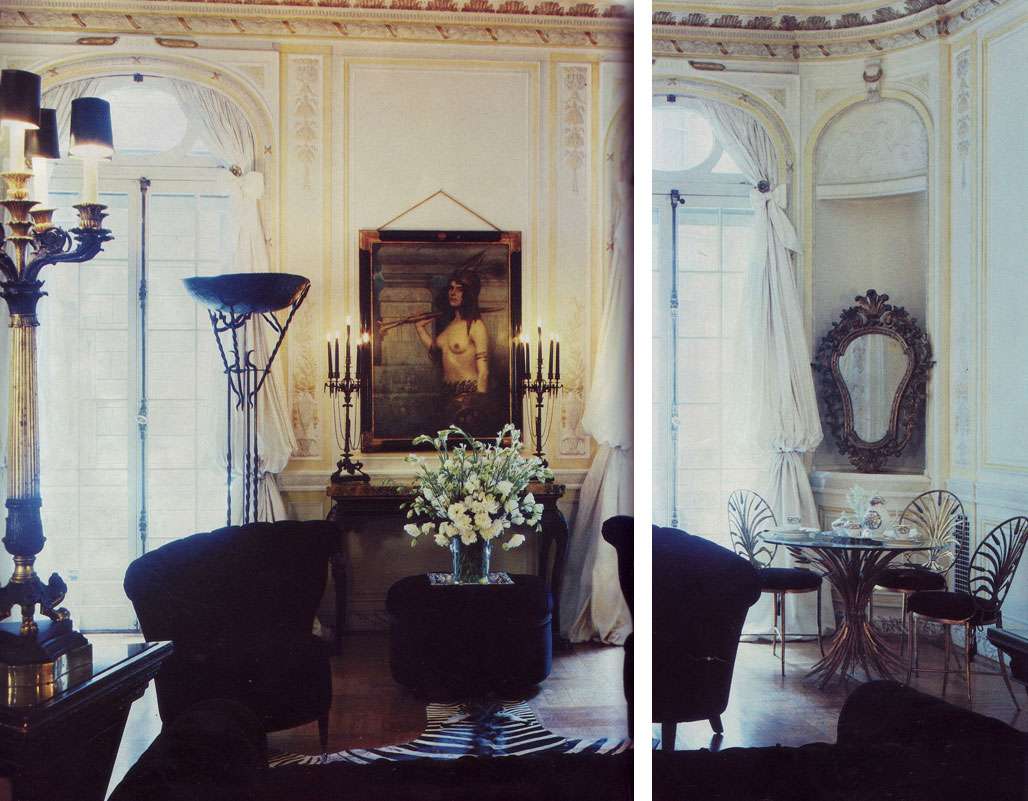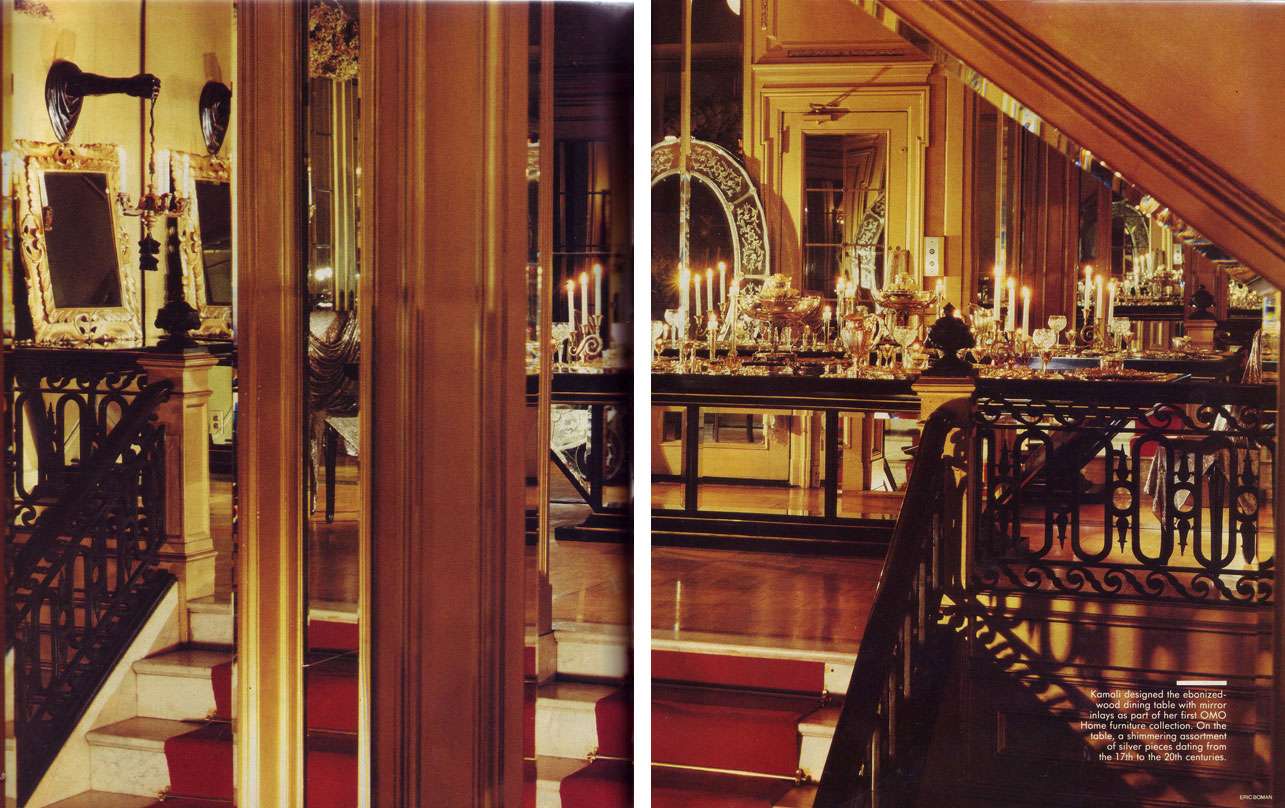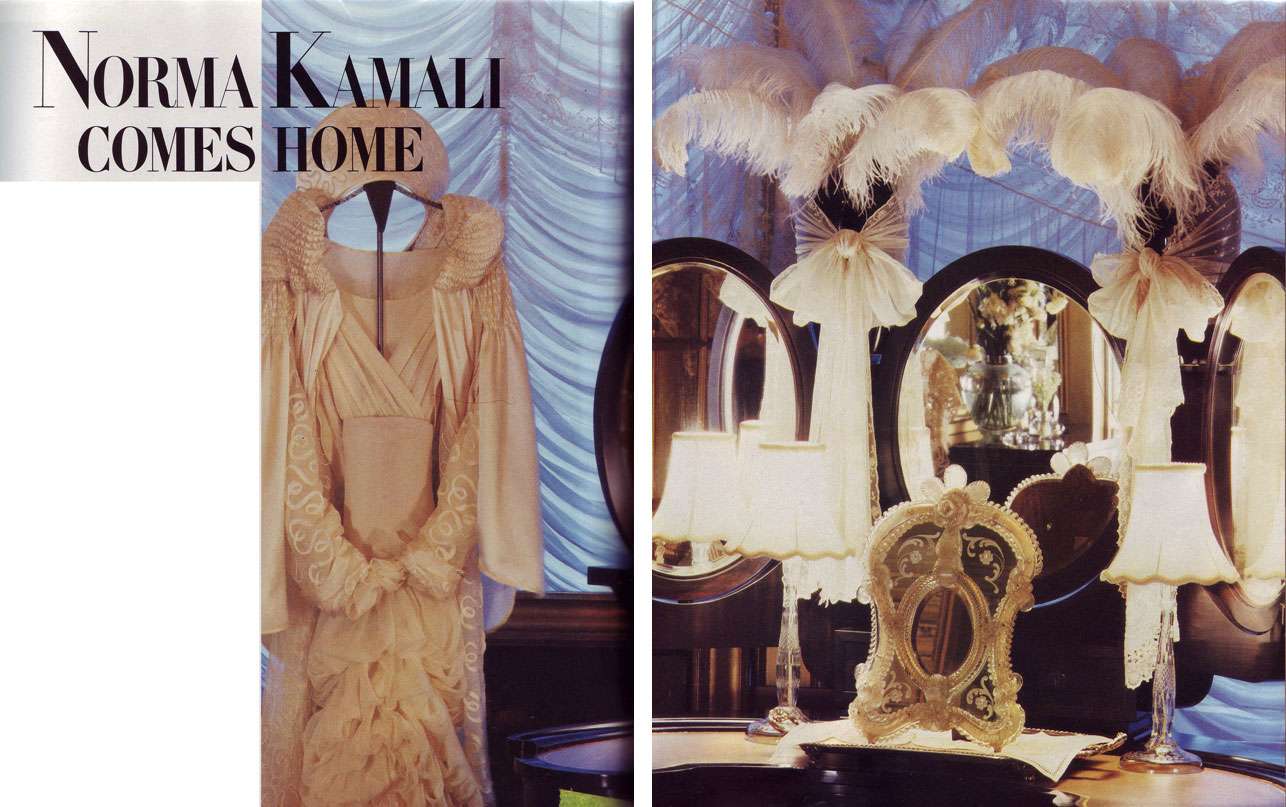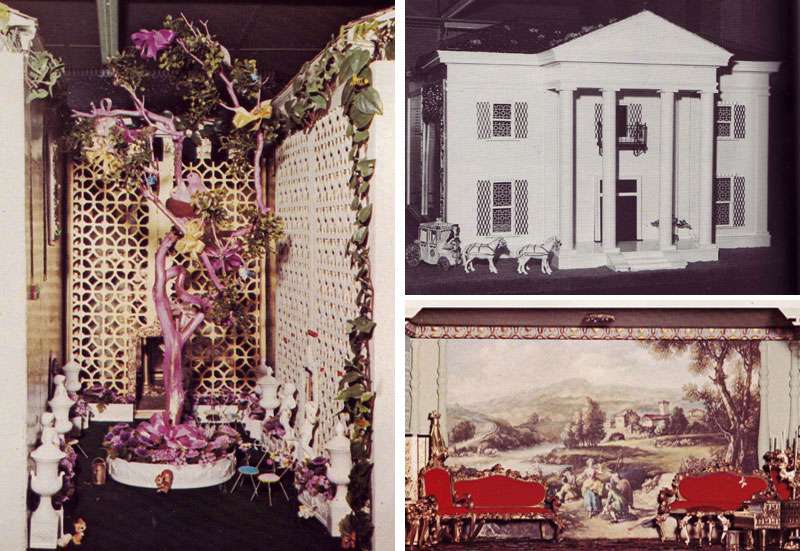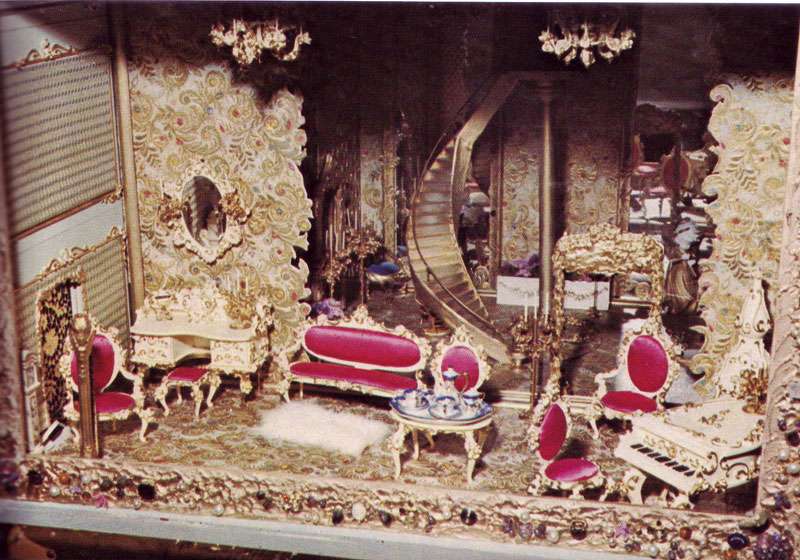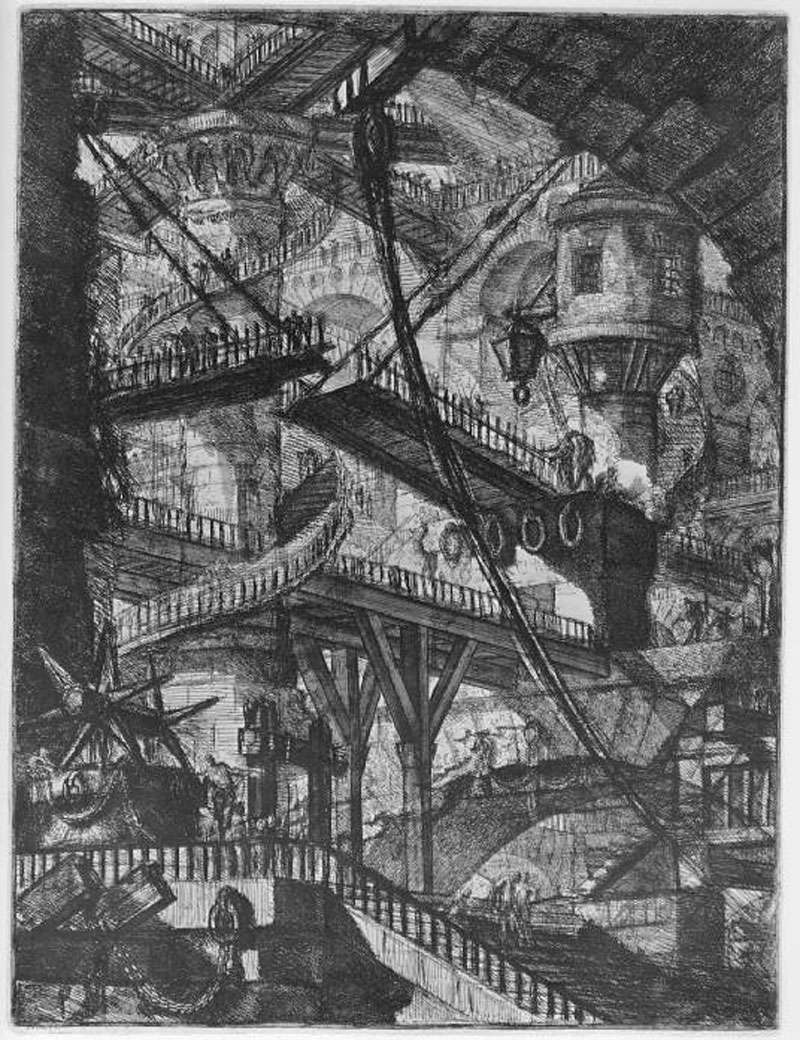Check out this upholstered room by Mark Hampton, for instance. Can you believe the nylon plaid that crawls right off the floor and UP THE WALLS!? I can only imagine it would be difficult to watch that tiny television. Surely, one's head would be spinning from all the plaid:
Above "Bold plaid design of all nylon carpeting covers the floor and then goes up the wall; its splash of color echoes the steel-strong mood of the room." Design by Mark Hampton.
Above, "Fabrics lend flair to a living room made attractive and inviting by the well planned juxtaposition of pattern color, scale and texture. The key print [is a] a weave of Avisco rayon and cotton [and] flooring is vinyl tile." No designer credited. (Well planned juxtaposition? They're so serious!)
Above, "Dining rooms are formal and informal...Entire kitchen and bookcase can be closed off by wood-grained folding doors, but when they open (ed: get ready for it) they reveal plastic-faced cabinet screen printed to match fabric on upholstered pieces. Red formica topped table serves for dining." No designer credited.
Above: "Vinyl floor by Amtico was custom-colored to match print and wall tones."
Above: "A great way to add style to your kitchen, and easy maintenance too— a wall to wall kitchen carpeting such as the bright blue carpet by Thomas Pride Mills, used in attractive kitchen [above]. Made of all-Herculon olefin fiber, carpet eliminates waxing, mopping and polishing..." A carpet in a kitchen is easy maintenance? Clearly, they haven't been in my kitchen while I cook. I shudder to think what bright blue olefin looks likes. Am I EVER glad this image is black and white.
Above: "Family room sets the mood for fun and games...practical white vinyl floor... gets the punch of a zebra skin trophy..." Are those hot dogs vinyl too?

